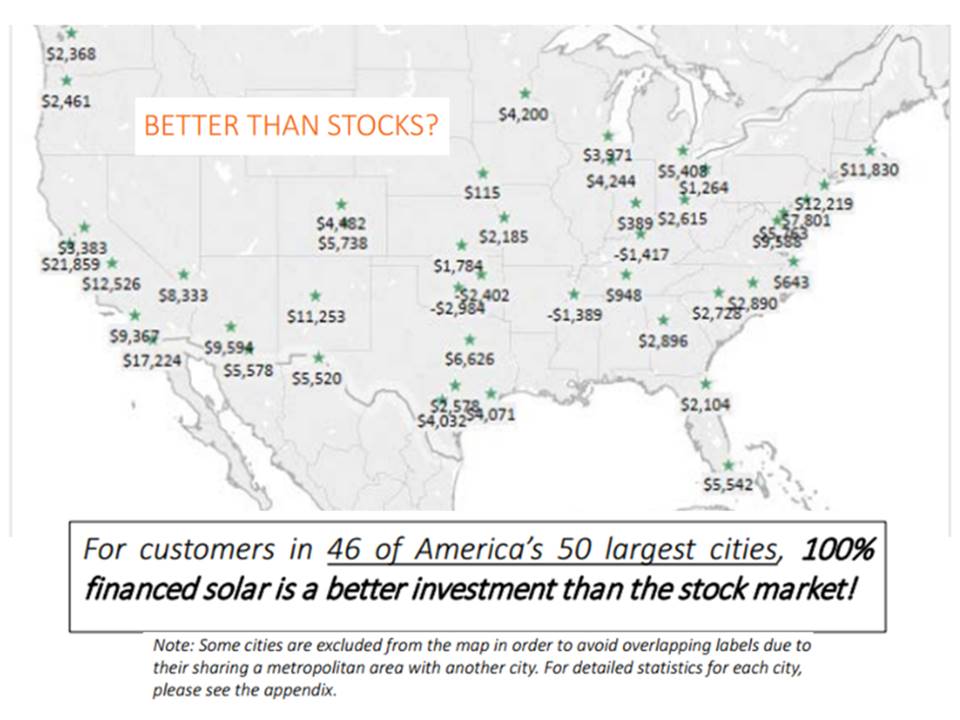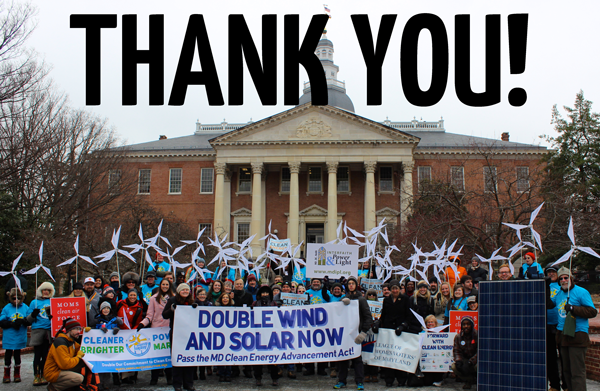
Just in case there was any doubt, “Americans ‘overwhelmingly’ prefer solar and wind energy to coal, oil, and nuclear energy, according to a Harvard political scientist who has conducted a comprehensive survey of attitudes toward energy and climate for the last 12 years.” So begins a New Year’s Day column in Forbes by Jeff McMahon that a lot of people missed–for most people, New Year’s Day is not prime time for reading about energy issues.
It’s not even close. 80% of the American people want solar and wind to increase a lot, and another 10% want it to increase somewhat (The other 10% probably earn their living either directly or indirectly from the nuclear and fossil fuel industries, or perhaps live in caves and don’t want electricity, or maybe just lie to pollsters).
Said Harvard Professor Stephen Ansolabehere, “In order to get 90 percent, that means a lot of Republicans like solar and wind—more than coal. Everybody likes those sources. This is non-partisan.”
Interestingly, Ansolabehere began his surveys on energy preferences in 2001, when a group of MIT engineers–including a guy named Ernest Moniz, now Secretary of Energy–wanted to see if the public would go along with their idea to address climate change by building 300 new nuclear reactors.
Those MIT folks were probably pretty disappointed. Although as a DOE secretary still pushing nuclear power, Moniz does not seem to have internalized that lesson.
Perhaps Moniz should look a little closer around him. The American people are not just touting solar in public opinion surveys, they’re putting solar on their homes in ever-increasing numbers.
Americans aren’t stupid. Solar power simply makes sense, from any angle you look at it: it makes sense environmentally, it makes sense economically. Not only is solar now cheaper than grid electricity in 42 of the 50 largest U.S. cities, but “the numbers show money spent on a residential solar system earns a better return than investing in Standard and Poor’s 500 index fund.”
Early last year, we and others wrote that a new solar installation. mostly rooftop solar, was going up somewhere in the U.S. every four minutes. President Obama even mentioned that fact in his State of the Union address last year, a claim Politifact rated as “true.”

By late June, we–guessing just a little, since we didn’t have precise data at the time–said “it’s already down to about every 2 ½ minutes.” Now we can take the “about” out of that sentence: there is indeed a new solar installation going up in the U.S. every 2 1/2 minutes. By this time next year, it will be every 90 seconds, and it will continue to drop from there. And when we reach every 15 seconds, or more than a half-million homes per year–which we will, likely by 2018–we will reach the dreaded, or celebrated depending on your viewpoint, “utility death spiral” realm. How utilities choose to react to that–by even more aggressively going after renewables, a la Exelon, or embracing solar entirely, as is NRG Energy, which already is beginning a major expansion of its rooftop solar business–will be fascinating from an intellectual perspective, but more importantly will determine our energy future and whether we will effectively address the climate crisis.
Our bet is on the NRGs of the world. The Exelons and Entergys are clinging to an outmoded business model based on an outdated electricity generation and distribution system that is being overtaken by modern technology and the ingrained American trait of independence and self-sufficiency. If Americans can provide themselves and their families with their own electricity, and the cost is competitive, they’re going to do that. That people now actually save money by installing rooftop solar is just accelerating the trend. That’s how you get the Tea Party forming coalitions with environmental groups in states like Florida and Georgia to encourage solar power. When “Green Tea” coalitions exist and grow in strength–and even Fox News covers it favorably— you know it’s pretty much game over for the utilities that can’t shake themselves free of their 20th century stylings. The last time nuclear power was on a roll was the disco era of polyester and platform shoes. A retro return to that low point in fashion history is far likelier than the nuclear power industry ever returning to relevance.
Michael Mariotte
January 16, 2015
Permalink: https://www.nirs.org/2015/01/16/america-wants-solar-and-wind/
Your contributions make publication of GreenWorld possible. If you value GreenWorld, please make a tax-deductible donation here and ensure our continued publication. We gratefully appreciate every donation of any size.
Comments are welcome on all GreenWorld posts! Say your piece above. Start a discussion. Don’t be shy; this blog is for you.
If you’d like to receive GreenWorld via e-mail, send your name and e-mail address to nirs@nirs.org and we’ll send you an invitation. Note that the invitation will come from a GreenWorld@wordpress.com address and not a nirs.org address, so watch for it.
If you like GreenWorld, you can help us reach more people. Just use the icons below to “like” our posts and to share them on the various social networking sites you use. And if you don’t like GreenWorld, please let us know that too. Send an e-mail with your comments/complaints/compliments to nirs@nirs.org. Thank you!
GreenWorld is crossposted on tumblr at https://www.tumblr.com/blog/nirsnet




Solar equities aren’t making money. NRGenergy has a -4.66 annual return and SolarCity has a big minus, -37. They aren’t making money. I can’t find any solar equities that either pay a decent dividend (how can they if in the red since startup), that are publicly owned, or that are worth selling off polluting stocks in favor of solar.
If you or any NIRS folks have any favorites, please post.
Meanwhile, Bloomberg’s solar energy index fund, SOLAR:IND 784.45 costs a whopper.
Left out a word: should read Bloomberg’s global solar energy index fund.
It’s true, many renewable energy companies, especially solar, are not posting profits right now–as my small and dwindling investment in a Calvert Group alternative energy fund will attest. Some may never turn a profit. A partial explanation: These companies are for the most part not utilities, they’re making big investments now with an eye toward a big return later. For example, Solar City is borrowing hundreds of millions of dollars in order to finance its ability to install rooftop solar through no-money-down lease offers for its clients. As those lease payments come in over the next 30 years, that will provide a steady revenue stream to Solar City and presumably lead to profit. It takes money (investment) to make money.
The difference with nuclear companies like Exelon is that they’re already made those big investments (in terms of reactor construction costs), and they’re still losing money because the reactors are no longer cheap to operate.
By the way, NIRS certainly isn’t going to make investment advice! Not our area of expertise. Companies with great products can fail for a host of reasons that have nothing to do with their products. We simply don’t do the kinds of detailed financial analyses of any company that are necessary for useful financial advice. And, as a column in today’s Washington Post points out, the “dartboard” approach to investing is just about as good as “expert” advice anyway. We stay far away from all that.
“The last time nuclear power was on a roll was the disco era of polyester and platform shoes. A retro return to that low point in fashion history is far likelier than the nuclear power industry ever returning to relevance.”
That has to qualify as one of the best lines mocking the “nuclear renaissance” thus far. Bravo! More importantly, the content of your article outlining solar power’s rapid rise in popularity and usage is extremely encouraging.
With every Sun rise we are just that much closer to being free of the failing atomic energy “plants”. They cost to much to build and decommission. There is No solution for the deadly wastes. Same holds true for the tons & tons of irradiated metals the atomic “plants” produce. Enough!!!
With every Sun rise we are just that much closer to being free of the failing atomic energy “plants”. They cost to much to build and decommission. There is No solution for the deadly wastes. Same holds true for the tons & tons of irradiated metals the atomic “plants” produce. Enough!!!
My comment above– about issues with investing in alt. energy companies– seems to have been taken as pro-NPPs. For everyone’s advisement: I’ve been against them ever since I got my first job in VT, joined the New England Coalition Against Nuclear Power, and participated in demos against the building of it. Back then, people had not yet wised up, including most Vermonters. Today, FIVE decades later, I rejoice in VT Yankee finally being shut down.
Who took it as pro-nuclear? Certainly not us….
My comment above– about issues with investing in alt. energy companies– seems to have been taken as pro-NPPs. For everyone’s advisement: I’ve been against them ever since I got my first job in VT, joined the New England Coalition Against Nuclear Power, and participated in demos against the building of it. Back then, people had not yet wised up, including most Vermonters. Today, FIVE decades later, I rejoice in VT Yankee finally being shut down.